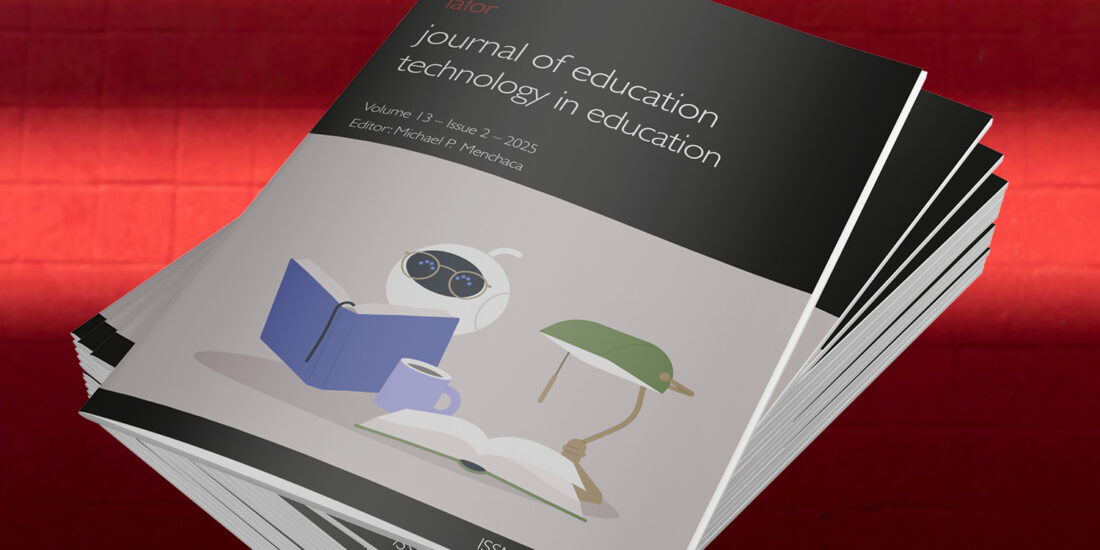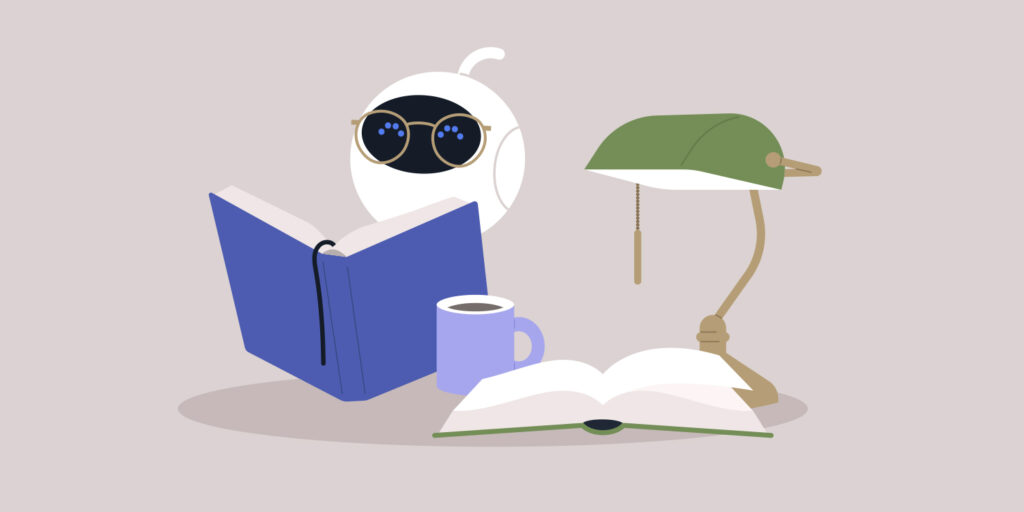Welcome to the Technology in Education issue
IAFOR Journal of Education: Volume 13 – Issue 2 – Technology in Education
Editor: Michael P. Menchaca
Associate Editors: Daniel L. Hoffman, & Devayani Tirthali
Published: August 25, 2025
ISSN: 2187-0594
https://doi.org/10.22492/ije.13.2
Dear Readers
The current issue brings together a diverse set of contributions reflecting the growing centrality of artificial intelligence (AI) and gamified educational apps, as well as the impact of technology on various fields such as library science, graphic design, and alternative education. The offerings in this issue present AI as both tools, examples including AI mediated intercultural communication and AI assisted robotics for children with autism, as well as articles highlighting need for critical consumption of AI. These articles illustrate both the promise and complexity of technology-mediated learning and information environments. (Read the full Editors' Introduction HERE.)
We hope you find them thought provoking and inspiring as we navigate the new realities of technology in education.
Happy reading and thinking!
Devayani Tirthali, Associate Editor
Michael P. Menchaca, Editor, and
Daniel L. Hoffman, Associate Editor
IAFOR Journal of Education: Technology in Education
[email protected]
Article 1
The first article reports on an impressive eTwinning initiative designed to cultivate intercultural understanding among Turkish and Italian undergraduate teacher trainees collaborating in a course mentored by Spanish Master’s students. Authors analyze student reflections using Tuckman’s model of group development and reflect on the findings with Allport’s contact hypothesis that intergroup contact under appropriate conditions can effectively reduce prejudice among intercultural teams. The paper highlights the use of AI translation tools by participants as Lingua Franca and what it takes for an international telecollaboration project to serve as a catalyst to foster inclusive and digitally competent educators.
https://doi.org/10.22492/ije.13.2.01
Article 2
Asking the question what it means to be “AI literate,” the second article proposes instructional design for a course focused on knowledge, application, evaluation and creation of AI tools as well as their ethical consumption. With detailed description of the four aspects of the course including specific outcomes, course activities and assignments, the paper will provide a useful starting point for course design. Documenting three case trajectories of course participants, the study demonstrates how reflective practice through journaling and guided tasks can turn AI into a research partner that can be interrogated rather than merely adopted.
https://doi.org/10.22492/ije.13.2.02
Article 4
Continuing with the AI theme, the next paper explores how AI-enabled plush robots might support children with autism spectrum disorder. The study reports on interviews of 13 experts (teachers and various healthcare professionals) who evaluated plush toy robots embedded with AI features to enhance social engagement and emotional regulation. Based on expert feedback, the paper enumerates the features and functionalities of the robots that need to be considered in varied educational and rehabilitation contexts. Although plush robotic toys were deemed promising, the paper highlights the need for expert supervision, making them a tool in structured therapeutic environments.
https://doi.org/10.22492/ije.13.2.03
Article 4
The fourth article interrogates the promises of gamified language learning apps through the lens of student motivation and cognitive engagement. Rather than focusing on design or pedagogy, the authors focus on the psychological response and subjective learning experience of the gamified elements and how it affects the intention to use the app. The statistical modeling confirms what many designers intuitively know: Playful, evaluative experiences drive sustained use. However, the more interesting contribution is how the elements of need, search, and evaluation embedded in the apps for L2 learning mediate this relationship.
https://doi.org/10.22492/ije.13.2.04
Article 5
Article five presents novel integration of mindfulness, a psychological construct, with research on digital competence and AI acceptance. Drawing on survey data from pre-service teachers in India, the authors argue that digital competence shapes attitudes toward AI most powerfully when mediated by mindful attention. Instead of the binaries of utopian adoption and dystopian resistance, the article presents a third space of fostering mindful digital practices for critical awareness and openness in adopting technological innovations.
https://doi.org/10.22492/ije.13.2.05
Article 6
In exploring how teachers in Alternative Learning System (ALS) develop and enact technological pedagogical content knowledge (TPACK), the sixth article reclaims the context specific complexity of classroom practice. Similarly, the methodological move to patchwork ethnography underscores context specific departure from traditional ethnography, to collect rigorous data in flexible and non-linear ways to stitch together a holistic picture of teacher practice. Teachers negotiate curriculum mandates, infrastructural constraints, and personal pedagogy in ways that reveal TPACK as a lived, adaptive process. The paper describes the contexts of ALS teachers that support or hinder the development of TPACK and suggests solutions at the systemic, institutional, and individual levels.
https://doi.org/10.22492/ije.13.2.06
Article 7
The next article systematically reviews research at the intersection of library and information science (LIS) and the growing global challenge of disinformation. Surveying a decade of scholarship, the authors make visible the changing role of librarians, archives, and information professionals as they integrate technology in combating misinformation. The librarians are increasingly positioned as front-line actors in promoting information literacy, verifying sources, and cultivating critical digital citizenship. The paper presents a conceptual map simplifying the complex landscape of information ecosystem involving librarians, information technology, misinformation, and information literacy. The article provides a useful resource for multiple stakeholders including teachers, journalists, activists, and policymakers.
https://doi.org/10.22492/ije.13.2.07
Article 8
The last article reports how Ghanaian graphic design students from two universities approach the ideation phase. Through classroom observations, interviews, and analysis of student work, the authors map practices and tools students use for idea generation and development. Providing examples of student sketchbooks as well as digital tools, the article describes intermingling of tradition and technology. The authors highlight how the classroom is a microcosm of global shifts in creative practice and underscore the need for pedagogies that embrace digital practices without sacrificing traditional processes.
https://doi.org/10.22492/ije.13.2.08


